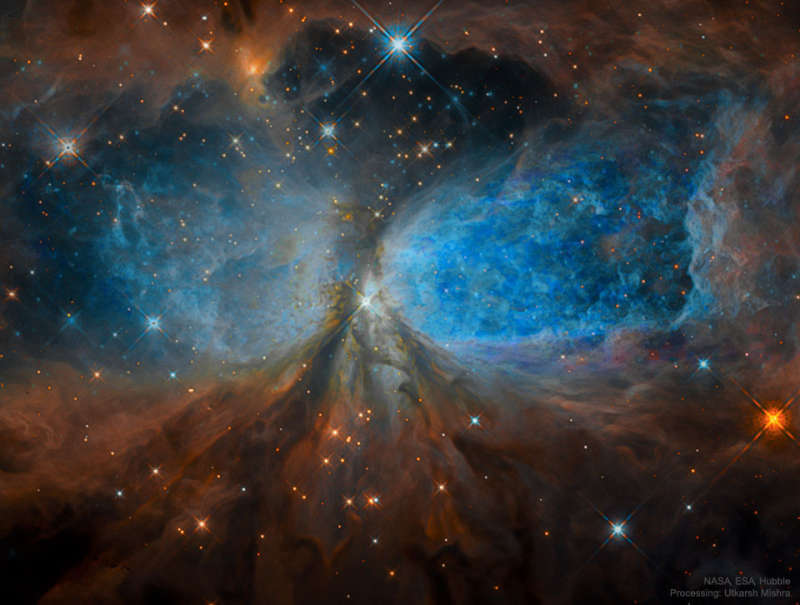Credit & Copyright: Utkarsh Mishra
Explanation:
Massive star IRS 4 is beginning to spread its wings.
Born only about 100,000 years ago,
material streaming out from this
newborn star has formed the nebula dubbed Sharpless 2-106 Nebula (S106),
featured here.
A large disk of
dust and gas orbiting
Infrared Source 4 (IRS 4), visible in brown near the image center,
gives the nebula an hourglass or
butterfly shape.
S106 gas near IRS 4 acts as an
emission nebula
as it emits light after being
ionized, while
dust
far from
IRS 4 reflects light from the central star and so acts as a
reflection nebula.
Detailed inspection of a relevant
infrared image of S106
reveal hundreds of low-mass
brown dwarf stars lurking in
the nebula's gas.
S106 spans about 2 light-years and lies about 2000 light-years away toward the
constellation of
the Swan (Cygnus).
1999 2000 2001 2002 2003 2004 2005 2006 2007 2008 2009 2010 2011 2012 2013 2014 2015 2016 2017 2018 2019 2020 2021 2022 2023 2024 2025 |
Yanvar' Fevral' Mart Aprel' Mai Iyun' Iyul' Avgust Sentyabr' Oktyabr' Noyabr' Dekabr' |
NASA Web Site Statements, Warnings, and Disclaimers
NASA Official: Jay Norris. Specific rights apply.
A service of: LHEA at NASA / GSFC
& Michigan Tech. U.
|
Publikacii s klyuchevymi slovami:
star formation - nebula - zvezdoobrazovanie - tumannost'
Publikacii so slovami: star formation - nebula - zvezdoobrazovanie - tumannost' | |
Sm. takzhe:
Vse publikacii na tu zhe temu >> | |
